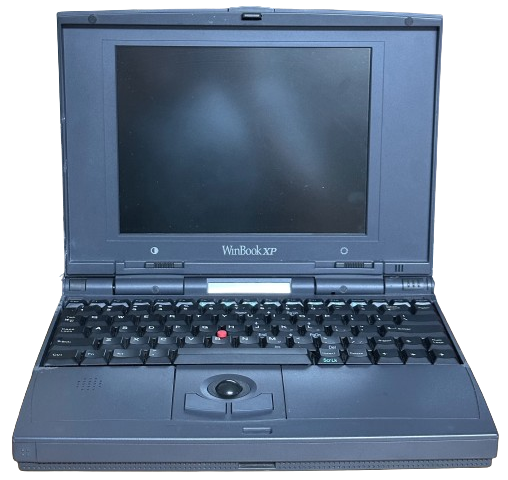
WinBook XP & XPC
The WinBook XP is a 486-based laptop, first released in May 1994. They followed up the SLC and SX/DX models, which were one of the first PC laptops to place the keyboard and trackball in the place where you would expect the keyboard and trackpad to be in a modern laptop, earning them praise. The WinBook XP continued this design, but introduced far more options. The first WinBooks stayed out of the high end market - the XP didn't. While it could be configured with low end parts, it was also sold with 486DX4-100 processors, Active Matrix displays, and even internal sound.
The XP was manufactured for WinBook by ASE Technologies, but I am fairly certain that it was designed in-house by WinBook, unlike later models which were customized generic laptops. I've never seen this laptop branded under any other name. The model number "ANL-4" that is printed on the bottom label of the WinBook XP is from ASE, and WinBook doesn't refer to ANL-4 anywhere in documentation.
Being custom-designed seems to have been to the XP's benefit. It was VERY well received by the tech press, and it went on to win over 17 awards, including PC Magazine's Editor's Choice, and PC World's Best Buy award - which it won 13 TIMES. It was mainly recognized as an excellent value option, offering some of the best features in the industry at great prices compared to comparable systems. Here are a few of the highlights.
Input Devices
The WinBook XP's input device options were perhaps its most unique feature. Where most other laptops offered a single input option, the WinBook XP offered three. The computer came standard with a TrackPoint, but could be optioned with a trackball for $30. A trackpad option was later made available - WinBook says in October 1994, but a January 1995 issue of PC Mag wrote that the module was not yet out, and was planned to be released in the first quarter of 1995. The input devices were also designed to be replaceable by the end-user. Just slide out a retention bar above the keyboard, lift up the keyboard, pull out the module, and replace it. Completely toolless.
They didn't skimp on quality either. The keyboard was a high-quality Lexmark "buckling sleeve" unit - that's the same mechanism that ThinkPads of the time used. The TrackPoint was IBM-licensed, not a clone. The trackball was made by Logitech, and I'm fairly certain the trackpad was made by Alps.
Sound
The WinBook XP could optionally be configured with a sound card. Sound cards in laptops in 1994 weren't that common, but they weren't rare either. Most high end laptops were starting to come with them. Still, it's a plus. The XP could be configured with one of two cards - the 8-bit ESS 488, or the 16-bit ESS 688. Like the input modules, the sound cards were designed to be installable by the end user. They were installed under a door on the bottom that was simply clipped in place - no screws!
In addition to the 488 and 688 cards, it appears that the WinBook XP also supported an ESS 1688 card. I don't believe they ever shipped with them, but WinBook's technotes for the XP have multiple articles related to installing and setting one up. My assumption would be that the XP was compatible with the ESS 1688 card that shipped with the Pentium-based WinBook XP5, and that WinBook likely offered it as an upgrade option for XP owners at that time. I actually have the XP5's 1688 card, which I got with a small lot of XP5 parts, but I don't own an XP, so I can't test that theory for myself. Either way, this makes the WinBook XP the only 486 laptop I know of which supports an ESS 1688 sound card.
WinBook XPC
Models shipped with the 66MHz Cyrix DX2 were known to WinBook as the XPC instead of the XP. The model badge on the lid of an XPC will say as such, but all other labels on the laptop remain as just "WinBook XP".
Specifications
| Spec | Details |
|---|---|
| CPU Options | - Intel 486SX @33MHz - Intel 486DX2 @50 or 66MHz - Intel 486DX4 @75 or 100MHz - Cyrix 486DX2 @66MHz |
| RAM | 1 Proprietary slot with a cardedge connector - 32MB Maximum - WinBook XP5 RAM uses a different connector and will not work in an XP. |
| Hard Disk | IDE 2.5" - Shipped with drives from Hitachi and Toshiba, 120MB-2.0GB capacities |
| Display Options | - Passive Matrix Grayscale @640x480 - 9.4 or 10.3" Passive Matrix Color @640x480 - 9.4 or 10.4" Active Matrix Color @640x480 |
| Graphics Chipset | Western Digital 90C24A2 - 1MB VRAM |
| Audio | Optional with one of the following cards: - ESS 488 - ESS 688 - ESS 1688 (aftermarket upgrade only?) |
| Main Battery | - NiMH, 12V, 2500mAh, Sanyo 4/3A cells - NiMH, 12V, 3000mAh, Varta 4/3A cells |
| CMOS Battery | VARTA 3-cell NiMH, soldered to the motherboard |
| Power Supply | - Barrel Jack - 19V 1.5A - Delta Electronics ADP-30DB-1 |
| Disk Drives | 3.5" 1.44MB Floppy Drive - Citizen W1D |
| PC Cards | 2x PCMCIA Slots (2x Type II/1x Type III) - Vadem 468 Chipset |
| Networking | Modem, 14.4 or 33.6 |
| I/O (Front) | None |
| I/O (Right) | Hard Drive Bay |
| I/O (Rear) | DC Jack, 1x PS/2, Serial, Parallel, VGA Out, Dock Connector |
| I/O (Left) | Modem, Floppy Drive, PCMCIA slots, Line In, Line Out |
| BIOS | Phoenix |
| Pointing Device | - TrackPoint (Standard) - Optional Trackball - Optional Trackpad |
| FCC ID | JRUANL-4C75 |
Resources
 Drivers |
 User Manual |
Archived Support Pages | Older FAQ |
|---|
Common Faults & Maintenance
The ravages of time have unfortunately gotten to these laptops pretty well. The vast majority will no longer start due to a leaky CMOS battery, and ones that may still work will be falling victim to hinge issues and failing floppy drives.
CMOS Battery Leaks
Both the main and CMOS batteries used in the WinBook XP use NiMH chemistry, and as such, they are incredibly prone to leaking after nearly 30 years of age. The main battery doesn't pose too much of a problem - it's pretty confined to it's own bay. The worst that will likely happen would be some damaged contacts, and possibly broken connections near them. The big issue is the CMOS battery. Like so many 90s laptops did, they used a VARTA NiMH multi-cell pack. These have a practical 100% leak rate at this point, and the WinBook XP's battery is mounted directly onto the motherboard, right next to the CPU. Because of this, nearly every WinBook XP and XPC laptop will end up being completely wrecked by this battery, and very few working examples likely survive today. If you own one that boots, get the battery out now! If yours is damaged, you can try your luck at cleaning the corrosion and repairing damaged traces and other components. For many though, it's likely too late.
Brittle Plastics and Hinge Issues
The WinBook XP series laptops are far from immune to the issue of brittle ABS plastic, and poor hinge mounting design. The ones I've seen on eBay have broken plastic around the hinges, as is normal at this point. All you can really do is epoxy any cracks up and hope it holds.
Floppy Drive Failure
According to WinBook documentation, these laptops use Citizen floppy drives, likely the model W1D. These drives have a belt in them that always goes bad. A guy in germany sells replacements on Ebay. Pick one of those up and you should be able to get your drive working again.
Other Issues
I do not own any of these! Because of this, I can really only go off of technical information, eBay images, and the couple online videos of these to determine what breaks in them. There could be other stuff that fails that I just don't know about, like bad capacitors, some random chip that dies, it's really hard to know. And of course, it will be affected by other general laptop problems, such as vinegar syndrome on the LCD.
Gallery
My WinBook XP (photographed below) is in very poor condition, and required some very obvious plastic repairs to get back in one piece. Obviously not museum-worthy, but shows what the XP looks like regardless. It also doesn't work, so no photos of it powered on.
Click on an image below to view the full-size version.
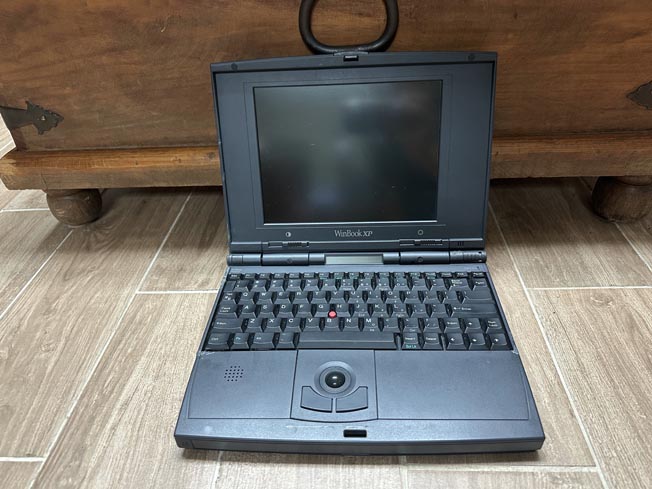
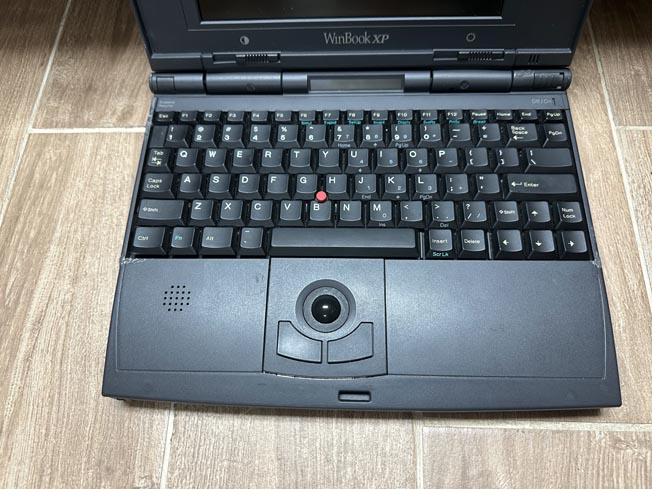
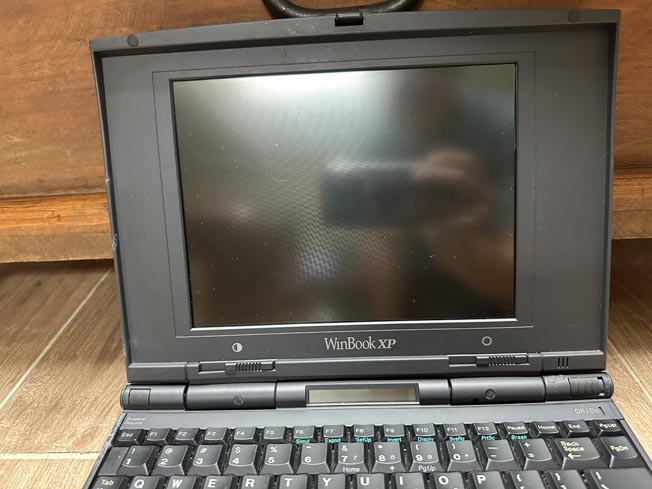
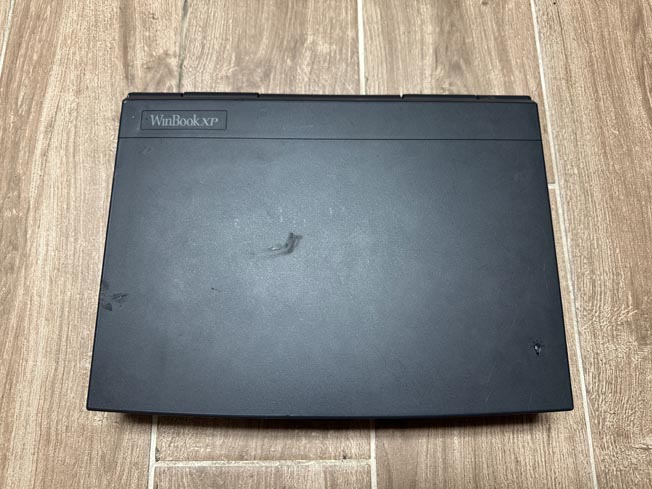
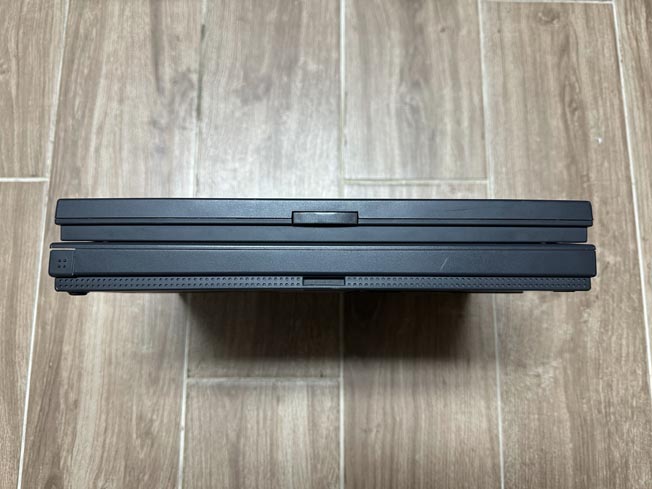
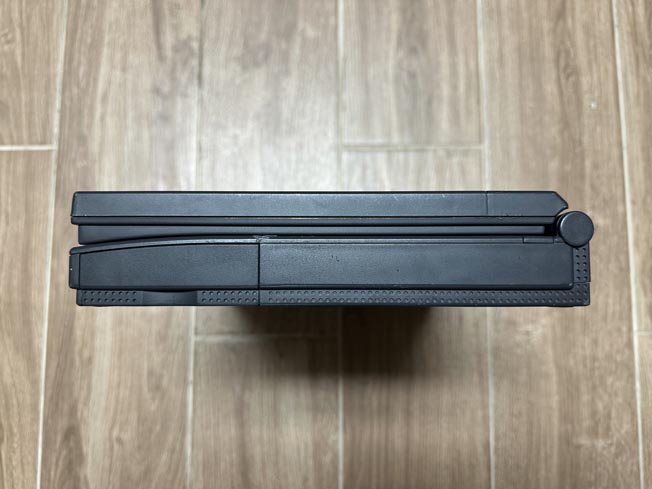
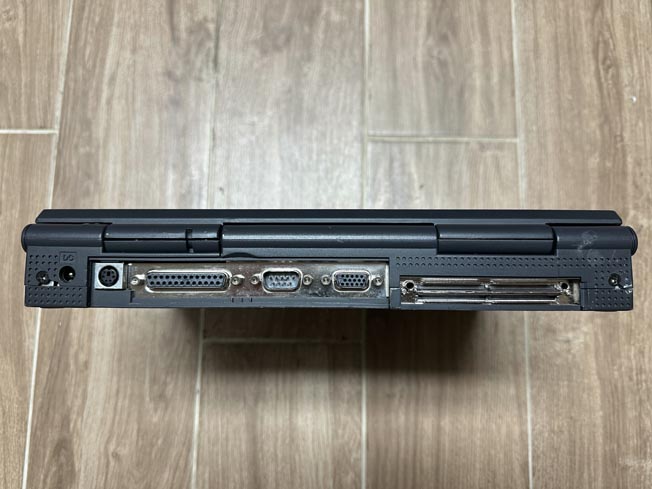
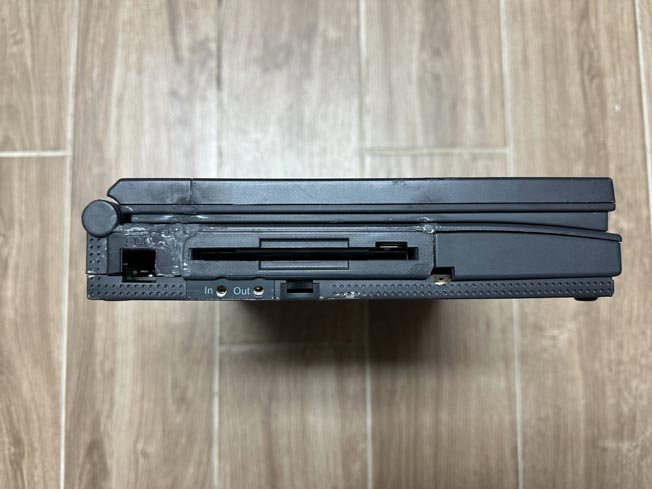
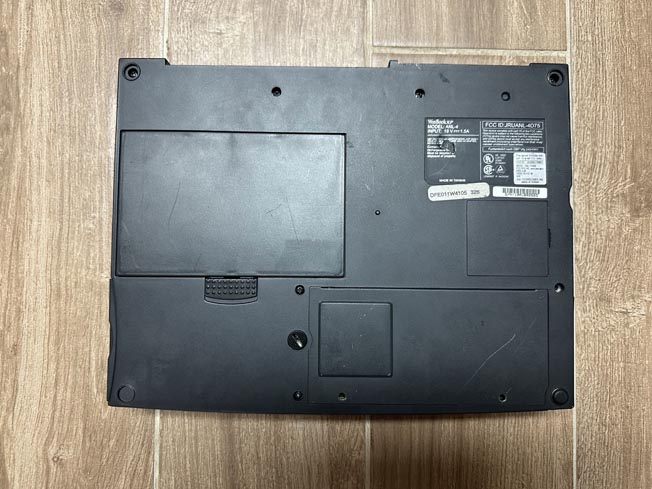

Print Ads
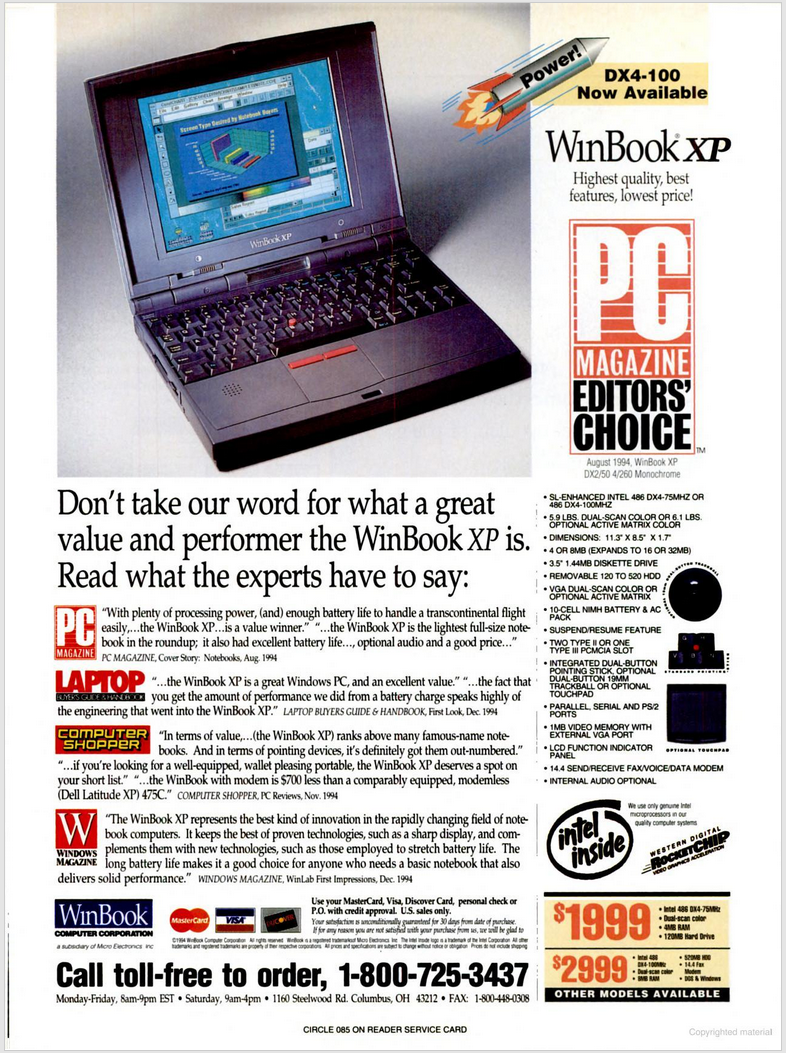
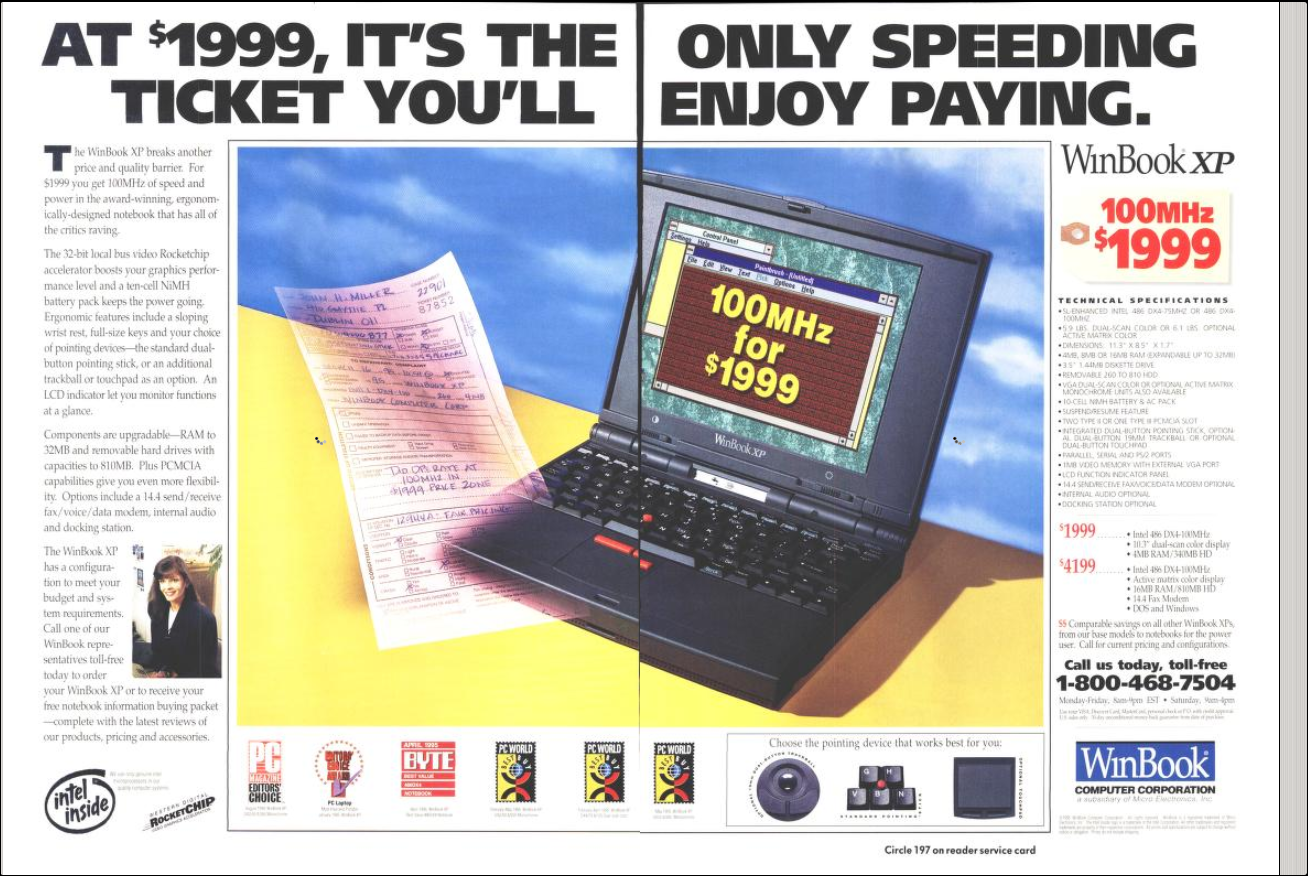
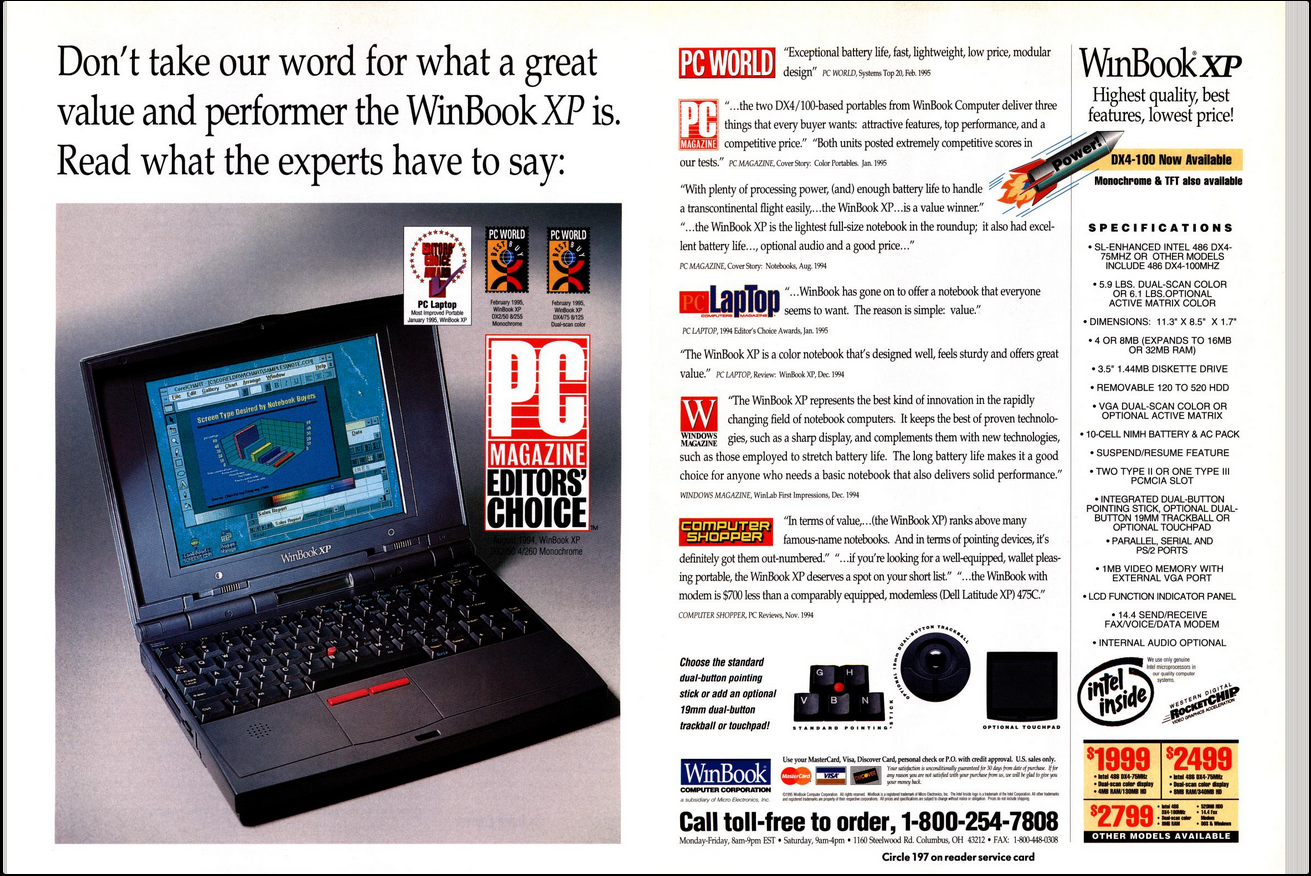
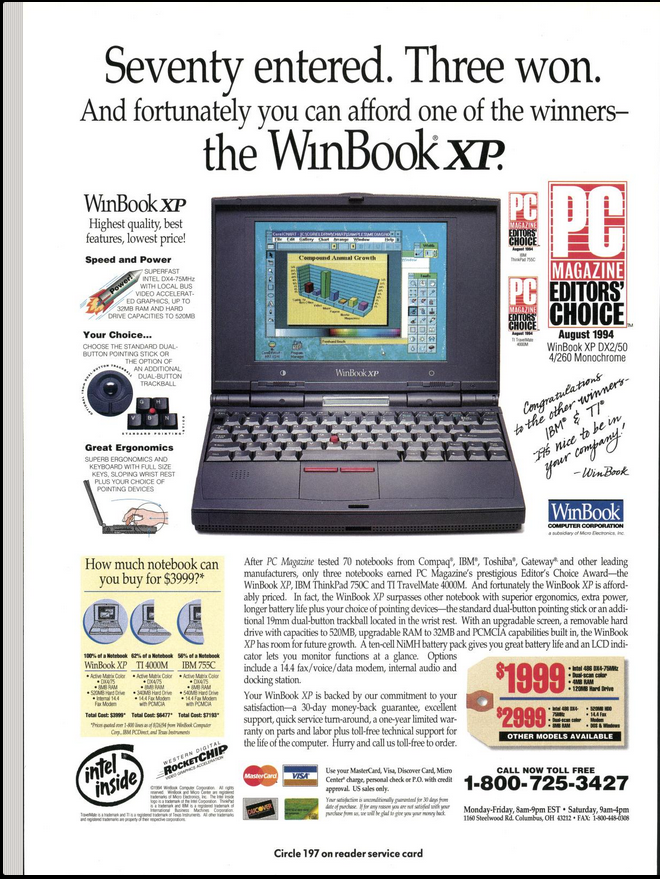
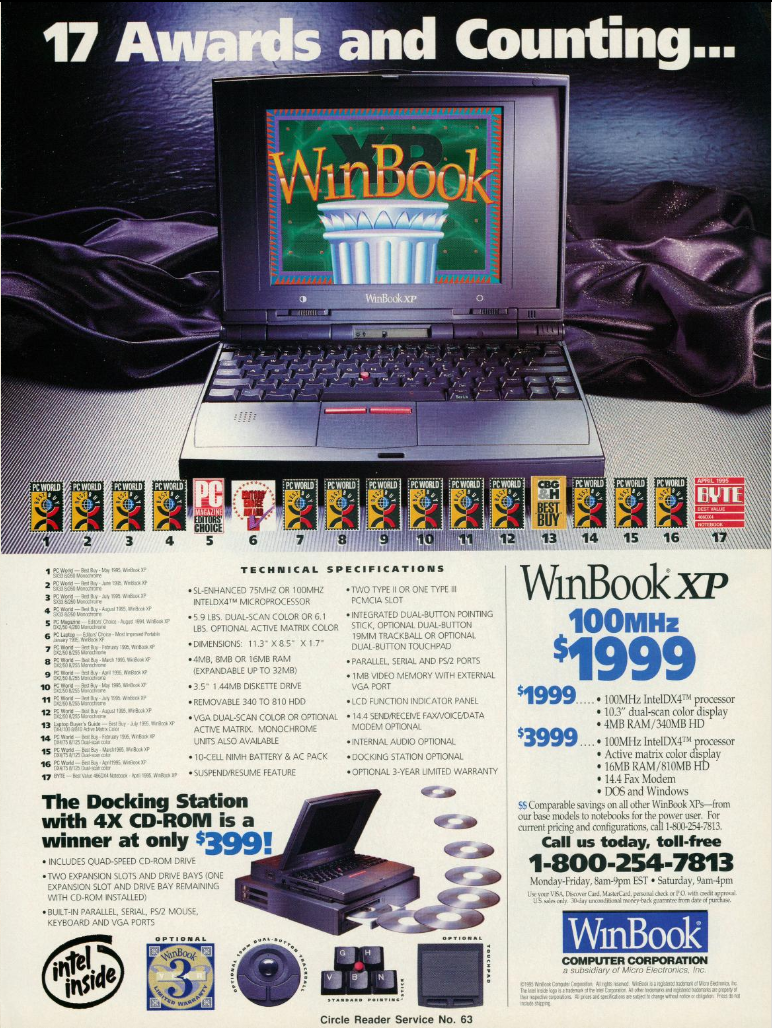
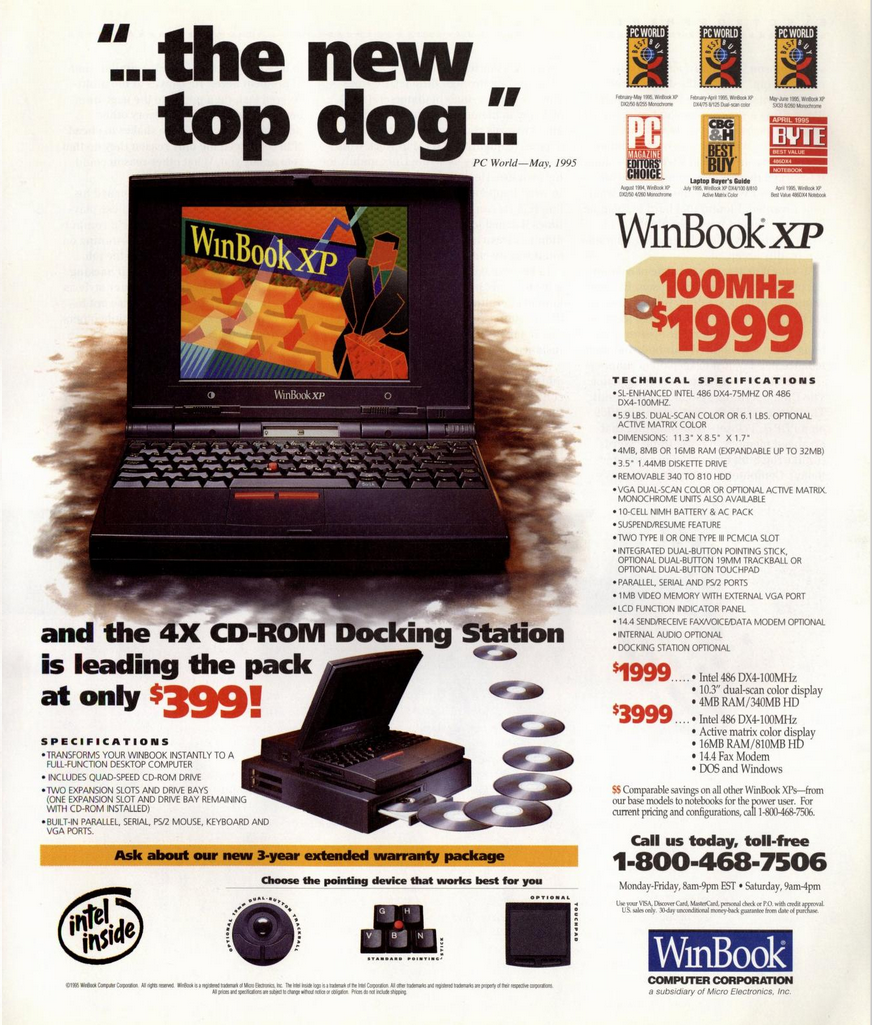
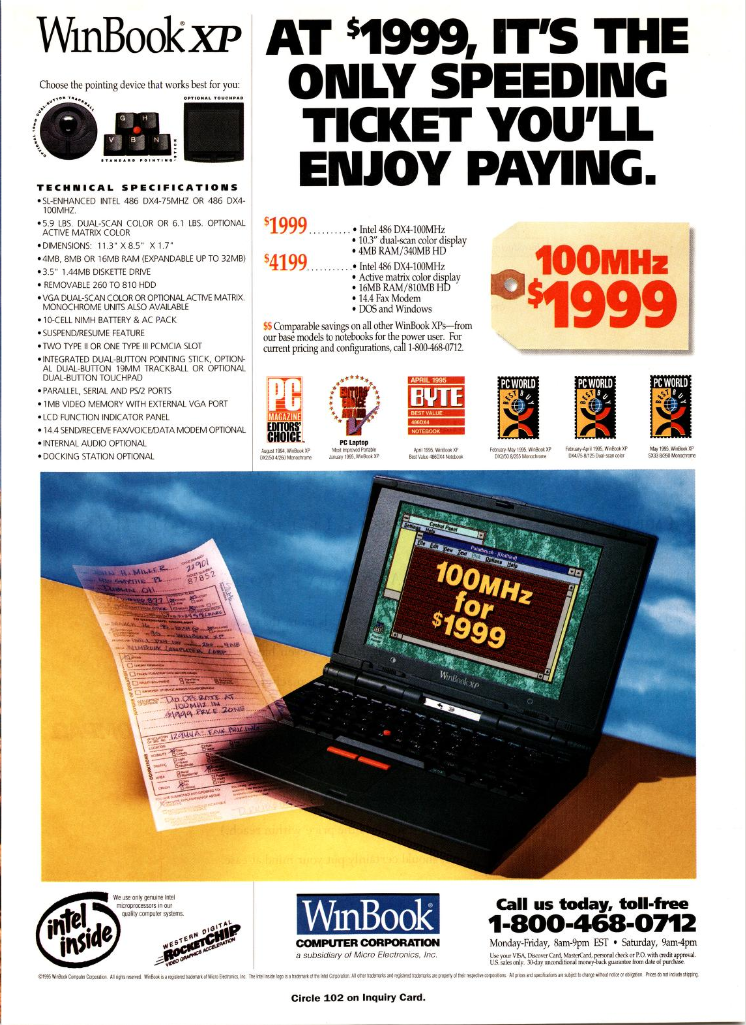
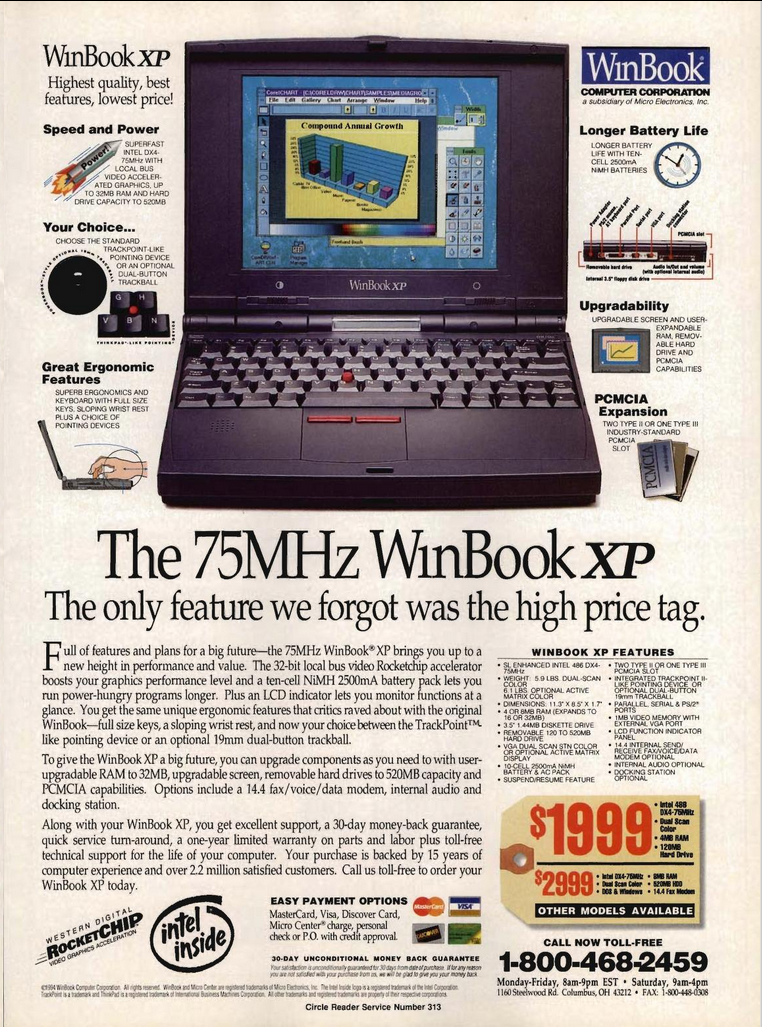
Page last updated (MM/DD/YYYY): 08/28/2024
Update Reason: images of laptop added
Back-Navigation
Index < Home < Laptop Portal < WinBook < XP/XPC